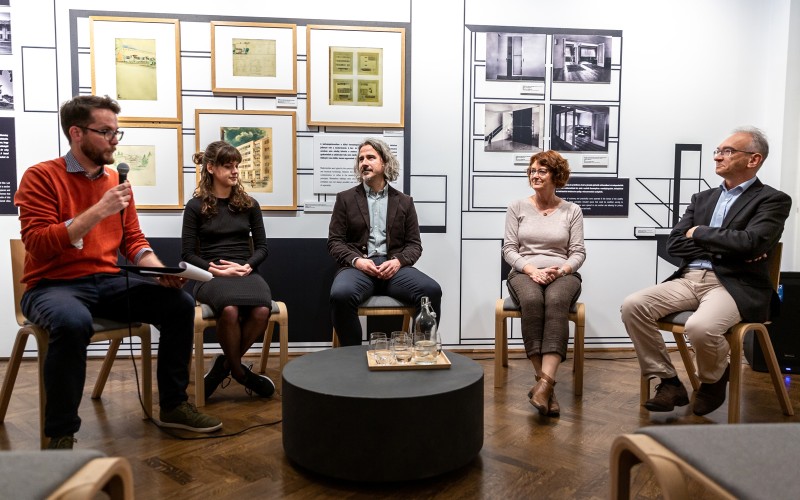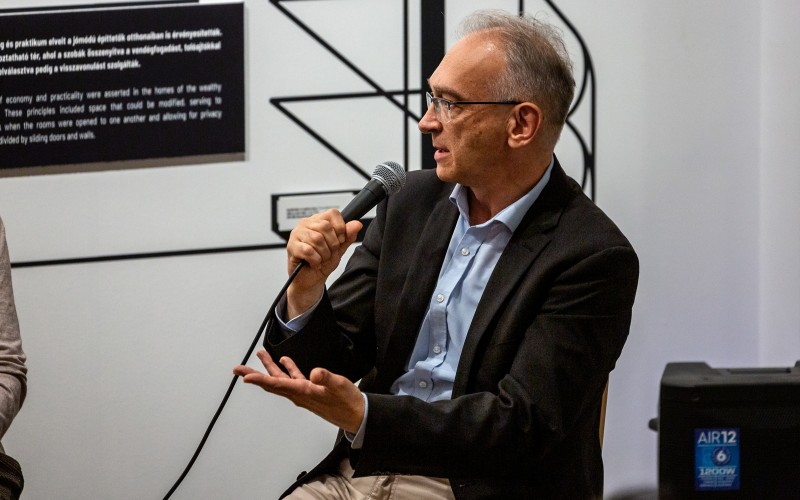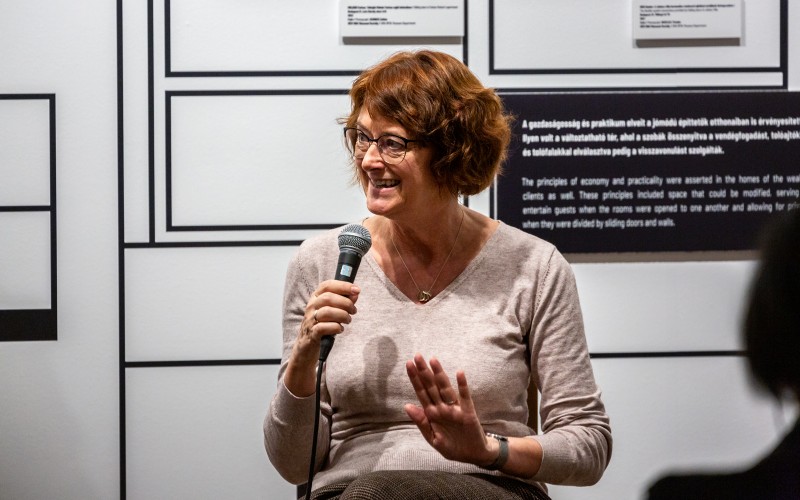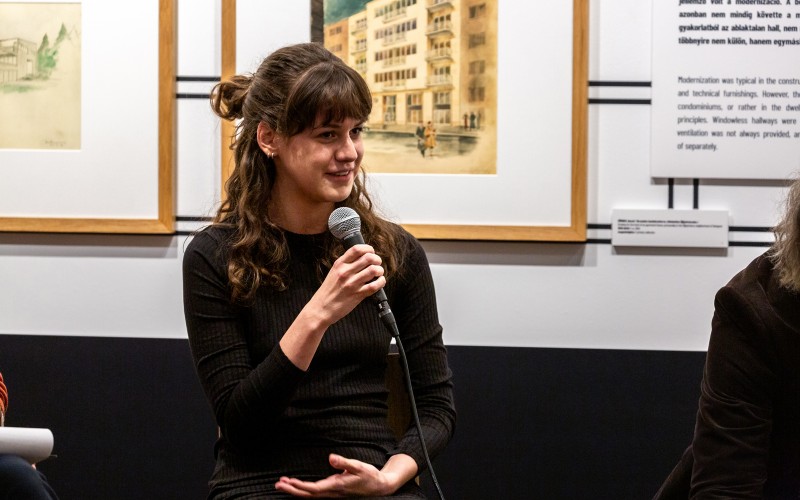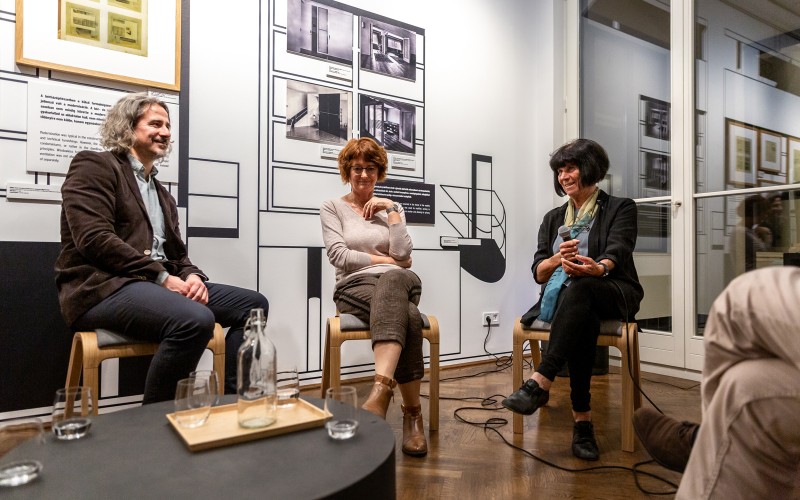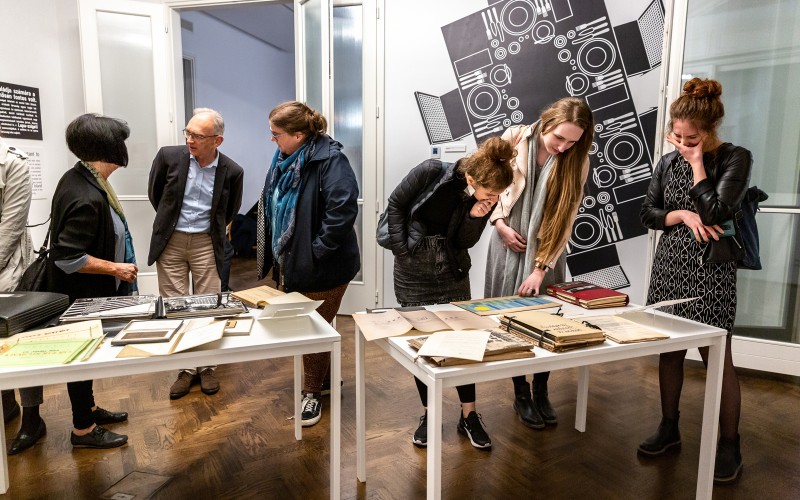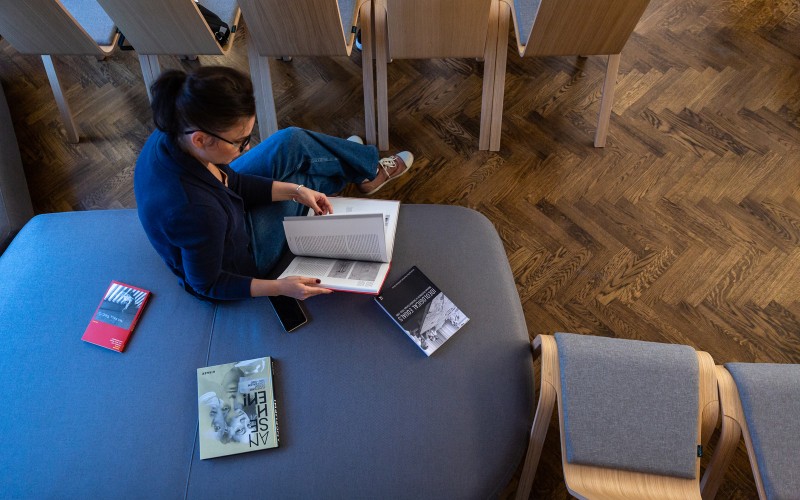The HMA MPDC’s new research project, Hungarian Women Architects, is based upon a simple recognition. This is the fact that women architects are almost completely missing from writings on Hungarian architectural history, their careers have not been comprehensively and systematically researched, and their legacies are missing from museum collections. As a result of this, the specific perspectives of women artists that have enriched our architecture do not appear in the Hungarian architectural scene. We have no insight into their everyday life, what inspired them, and how they realized their goals.
The prototype for the project is the 2017 Frau Architekt exhibition of the German Architecture Museum in Frankfurt, which presented the work of 22 German women architects in a single show (its curators were Mary Pepchinski, Christina Budde, and Wolfgang Voigt). Following this example, the preparatory research for the Budapest show will focus on the careers of approximately 30 women architects, and the main subjects of the exhibition and its catalogue will come from this group. The objective of the research and the related events are not just to place the spotlight on careers that have been unjustly ignored, but also to help refine the current methods of architectural history writing as well as to provide new perspectives and areas of interpretation, thus enriching the image of Hungarian architecture.
At the event on the 13th of October, the curator and initiator of the research project Dániel Kovács summarized the Hungarian research up to this point on the topic in his introduction. The architect and host of the Women in Architecture Instagram page Júlia Böröndy, the architect and researcher Mariann Simon, the historian and sociologist Márkus Keller, and the art historian and HMA MPDC department head Pál Ritoók participated in the following roundtable discussion moderated by Dániel Kovács.
The four participants in the discussion approached the topic from differing directions. As a practicing architect, Júlia Böröndy is primarily interested in the spatial implications of the issue, or how the built environment affects the lives of given social groups. Mariann Simon cited the work of Mary Pepchinski in connection with the issue, as well as the exhibition she organized together with Judit Z. Halmágyi presenting four women architects, which were created at the N&n Gallery at the request of Bálint Nagy. Márkus Keller became interested in the women architects involved through housing construction and policies, and Pál Ritoók has researched and cited the works of early pioneers in this field.
Women taking on the role of architect cannot be separated from 20th century Hungarian history. In certain respects Hungary could be considered very conservative in this area. One example of this is related to university regulations, since the Technical University was only opened to all without restrictions after 1945. However, it could also be seen as progressive in terms of international participation under socialism. According to Márkus Keller, the latter circumstance even raises the question of whether it is possible to speak of the idea of the Eastern European women architect. Mariann Simon raised the point that measures intended for public welfare also sometimes had unexpected effects. One of the goals of the childcare assistance introduced in 1967 was expressly to push women out of the architectural profession. The retirement age of 55 also had a similar effect in the case of women.
The participants agreed that it is not worthwhile to talk of female and male architecture in terms of results, as we are speaking of architectural activities in every case. However, the professional and social situation of women working as architects is certainly worth examining. Márkus Keller cautioned that it is necessary to pick through the process of how these artists pictured and continue to picture themselves and how their situation is seen today. In the end, Pál Ritoók summed up by stating that it is not necessarily careers and professional lives that we are talking about, but human destinies.
At the end of the discussion, the professionals launching the project asked for the support of the audience in the forthcoming research phase. The goal of the Hungarian Women Architects project in the short term is to write up about 25 careers, finalizing the current list. However, the researchers are interested in works, careers, and documents that go beyond these limits as well. The plans include regular reporting in the architectural and artistic press as well as here on the home page of the HMA MPDC on the process and results of the research.
Dániel Kovács
Photographs: Vica Wachsler


